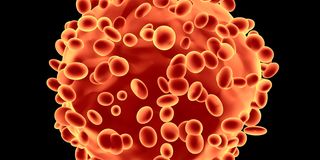Cancer research group develops therapy for curing tumours safely

A global research group has developed a new type of tumour-targeted therapy that has the potential to treat several kinds of cancer, with fewer negative side effects than currently available methods.
A global research group has developed a new type of tumour-targeted therapy that has the potential to treat several kinds of cancer, with fewer negative side effects than currently available methods.
The therapy that assembles anti-cancer drugs inside the body has succeeded in treating cancer in mice with the researchers planning a clinical trial of the same in humans.
The findings, published this week in the Scientific Chemical Science Journal, are the first report of therapeutic in vivo synthetic chemistry being used to make anti-cancer substances where they are needed simply by injecting their ingredients through a vein.
The findings of the study revealed that the therapy when used on mice, the tumour grew three times less and survival was 100 per cent after one injection.
The study findings done by researchers at the RIKEN Cluster for Pioneering Research (CPR) in Japan revealed that the injection is designed to emit small radiation from the inside of cancer cells, killing them while sparing healthy tissue.
The new technique avoids indiscriminate tissue damage and is expected to have a significant impact on cancer treatment by aiming at destroying acrolein, a compound that accumulates in cancer cells.
When acrolein meets inside a cancer cell, they react, and a fluorescent compound becomes anchored to structures inside the cancer cell.
Acrolein is almost absent from healthy cells, the new technique acted like a probe to light up cancer cells in the body.
Rather than detecting the cancer cells, the researchers targeted those cells for destruction.
The side effects of standard chemotherapy and radiation treatment can be devastating, and eradicating all cancer cells is not guaranteed, especially when the cancer has already spread throughout the body.
With other treatments, while they are effective in killing and damaging cancer cells, they also damage non-cancerous cells.
However, the technique selectively finds its way to the cancer inhibiting cancer growth as well as reducing the side effects.
The researchers performed a proof-of-concept experiment to test their theory.
They implanted human lung-tumour cells into mice and tested the treatment injected into the tumour.
They found out that tumours grew almost three times less and mice recorded 100 per cent survival when injected into the tumour and 80 per cent when injected into the blood.
“We found that just one tumour injection with only 70 kBq of radioactivity was extremely effective at targeting and eliminating tumour cells. Even when injecting the treatment compound into the bloodstream, we were able to achieve similar results,” Dr Katsunori Tanaka, RIKEN Cluster for Pioneering Research.
“This means we can use this method to treat very early-stage cancer even if we don’t know where the tumour is adding that the fluorescent probe version of the new technique is already being tested in clinical trials as a way of diagnosing cancer at the cellular level.
“The new study assembled anticancer drugs inside the body near the cancer cells while avoiding putting any toxic drugs into the body at all.”
Dr Tanaka said that there are several cancer-targeted treatments but they cannot be applied to all cancers.
“One of the greatest advantages of our new method is that it can be used to treat many kinds of cancer without any targeting vectors, such as antibodies or peptides.”
The new therapy can help in the early diagnosis of cancer and aims at the cancer cells rather than one going through sessions of chemotherapy and radiotherapy.
In Kenya, for instance, many patients have died waiting for diagnosis and treatment that often comes too late.
Cancer is the second leading cause of death from non-communicable diseases and the number of cases is rising rapidly.
In 2020, 8.3 per cent of the total deaths in the country were due to cancer and, just like pneumonia, more men died than women.
Cancer has also been the leading killer disease among those aged 50-59, accounting for 12.7 per cent of their deaths.
About 29 per cent of cancer patients in 2019 missed or delayed treatment, the American Cancer Society says.
The main barriers to treatment were late diagnoses.
Having a few diagnostic centres in Kenya also contributes to late diagnoses, with the number of patients growing by the day.





